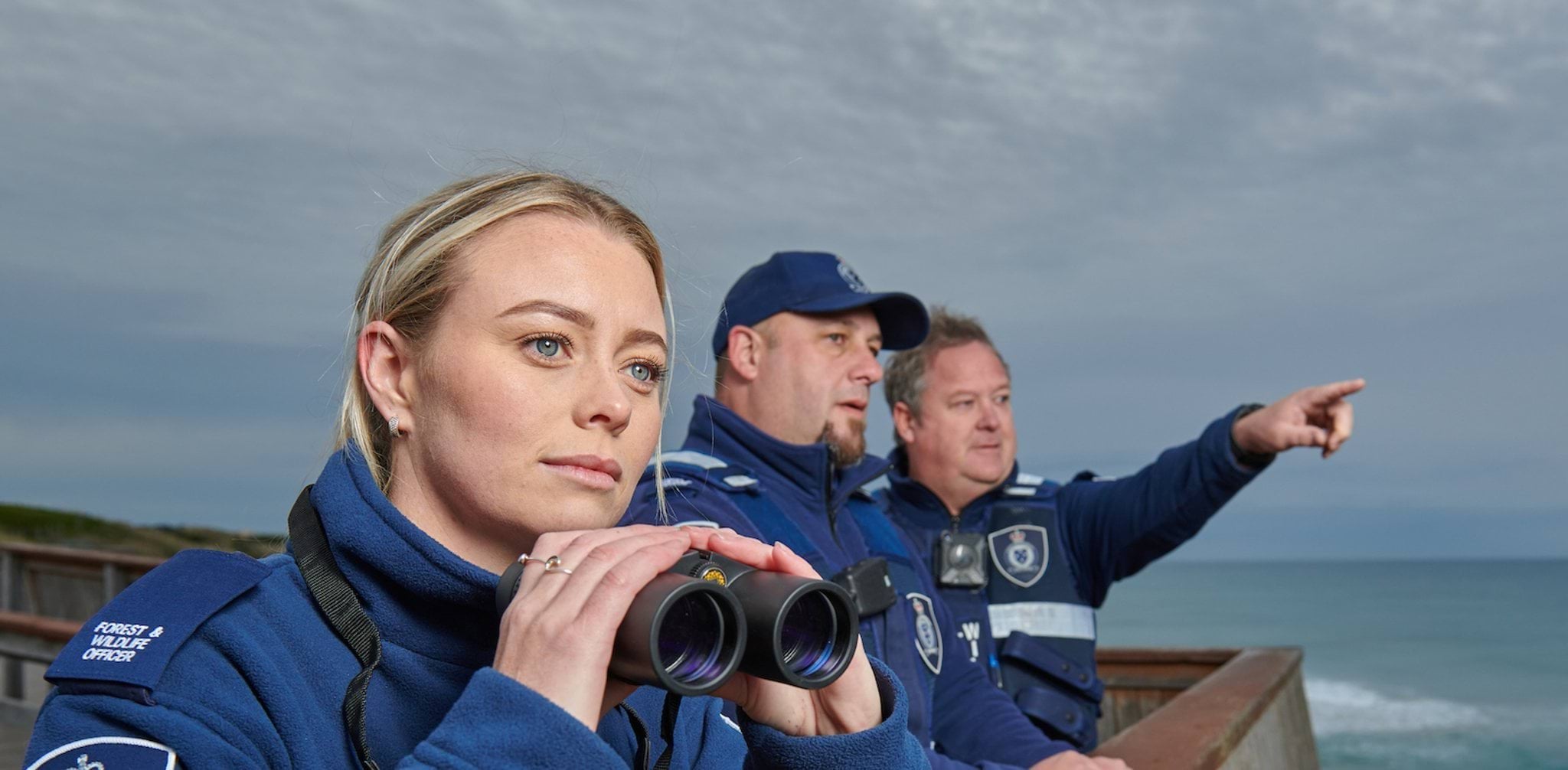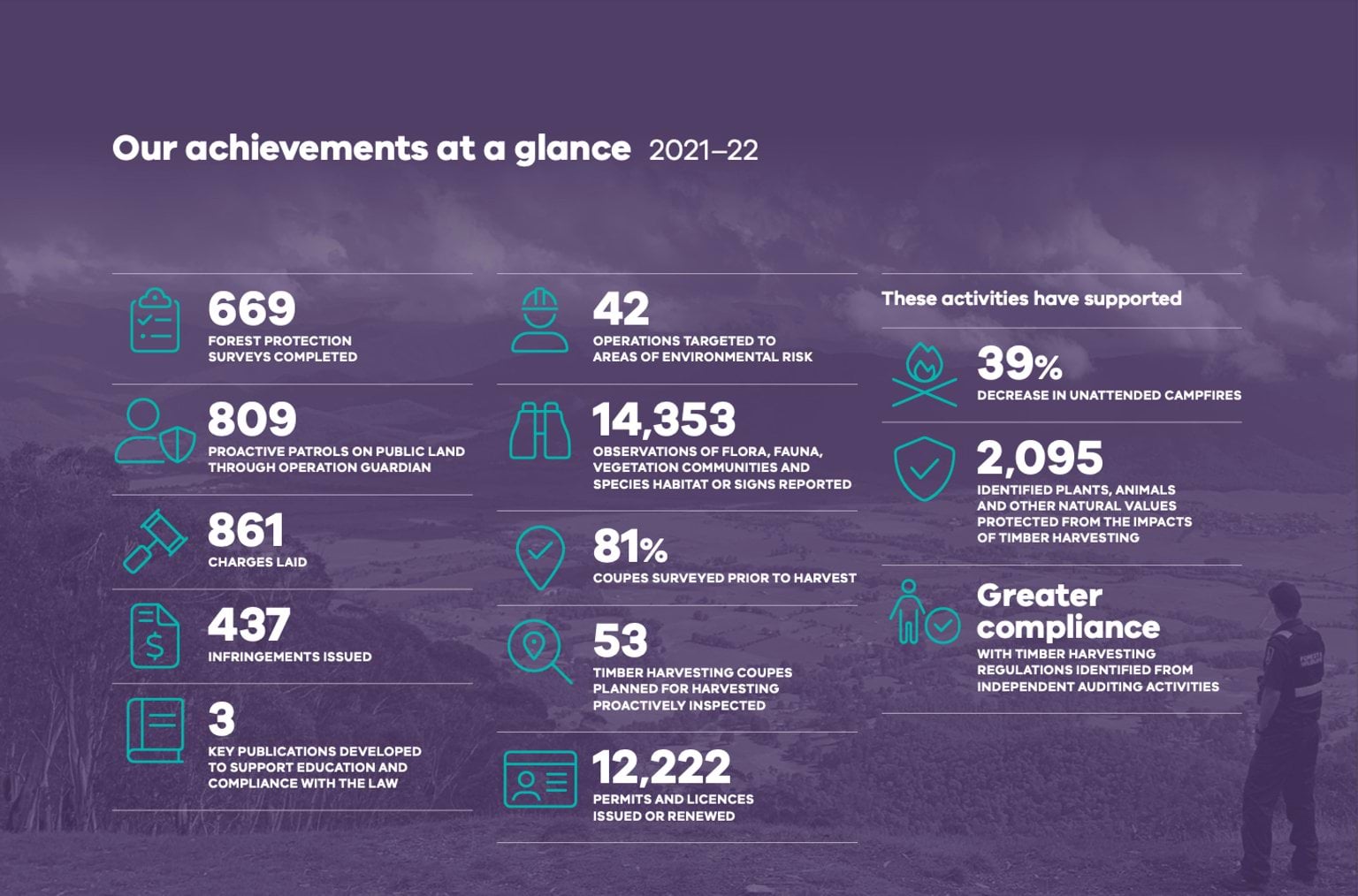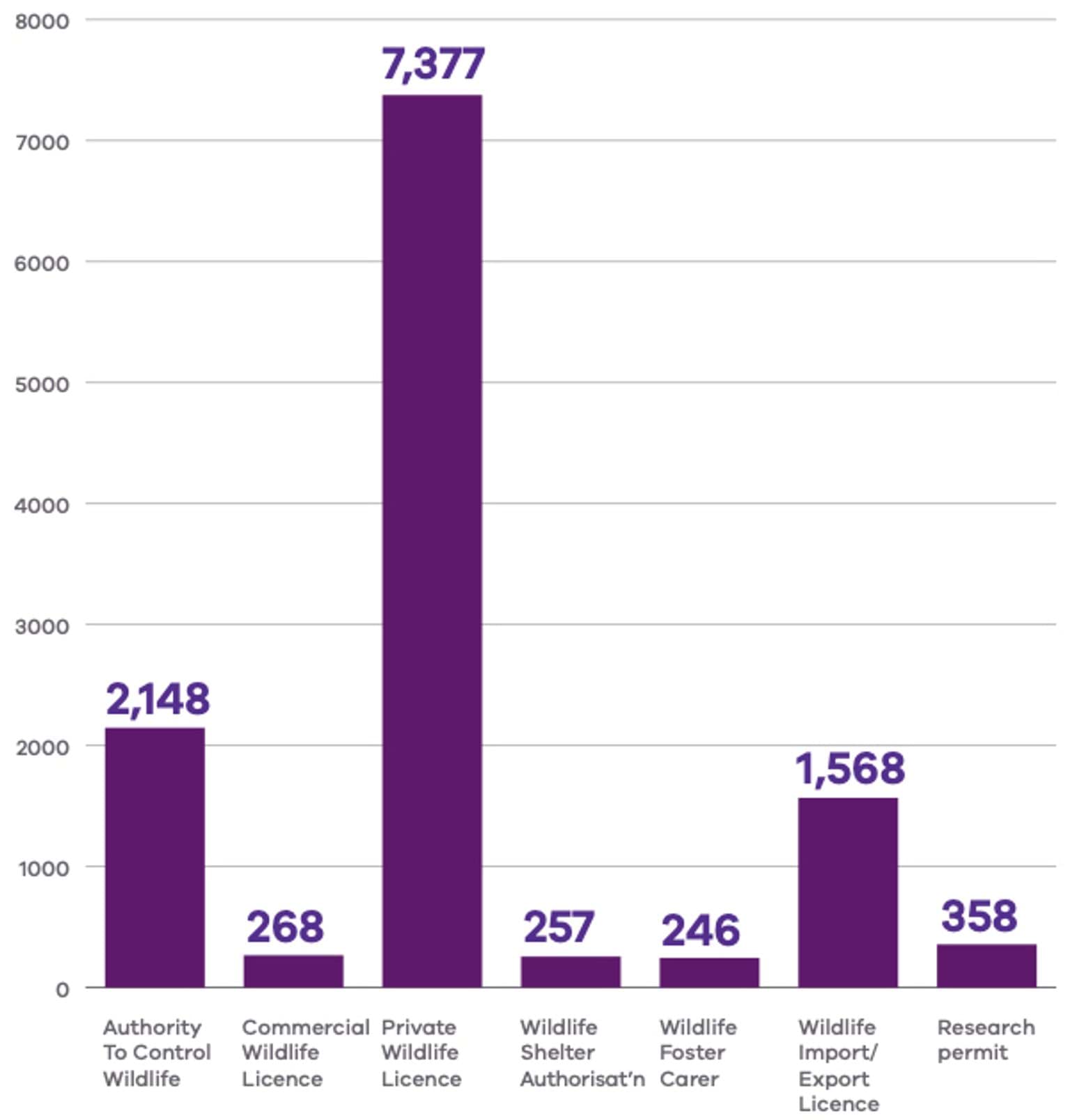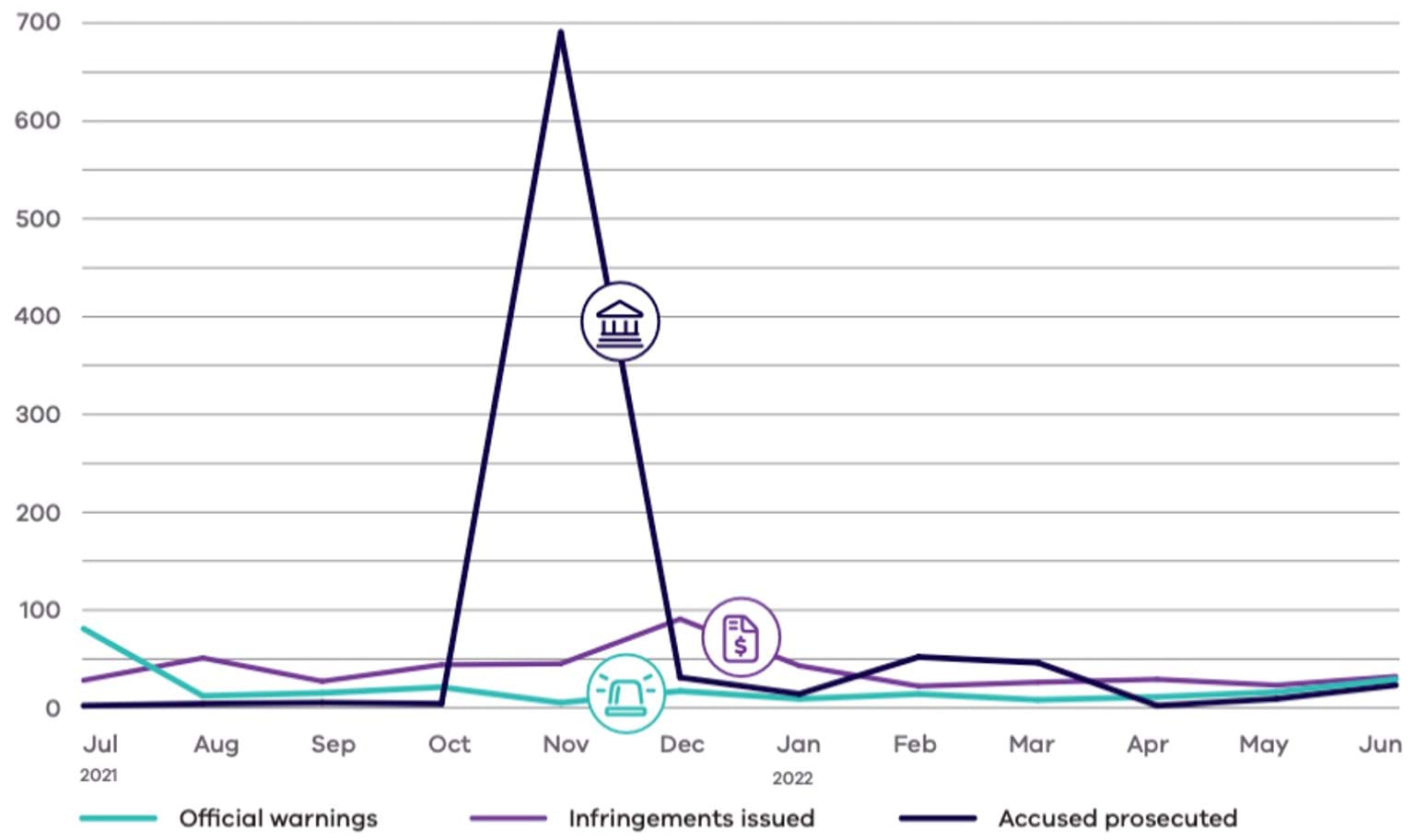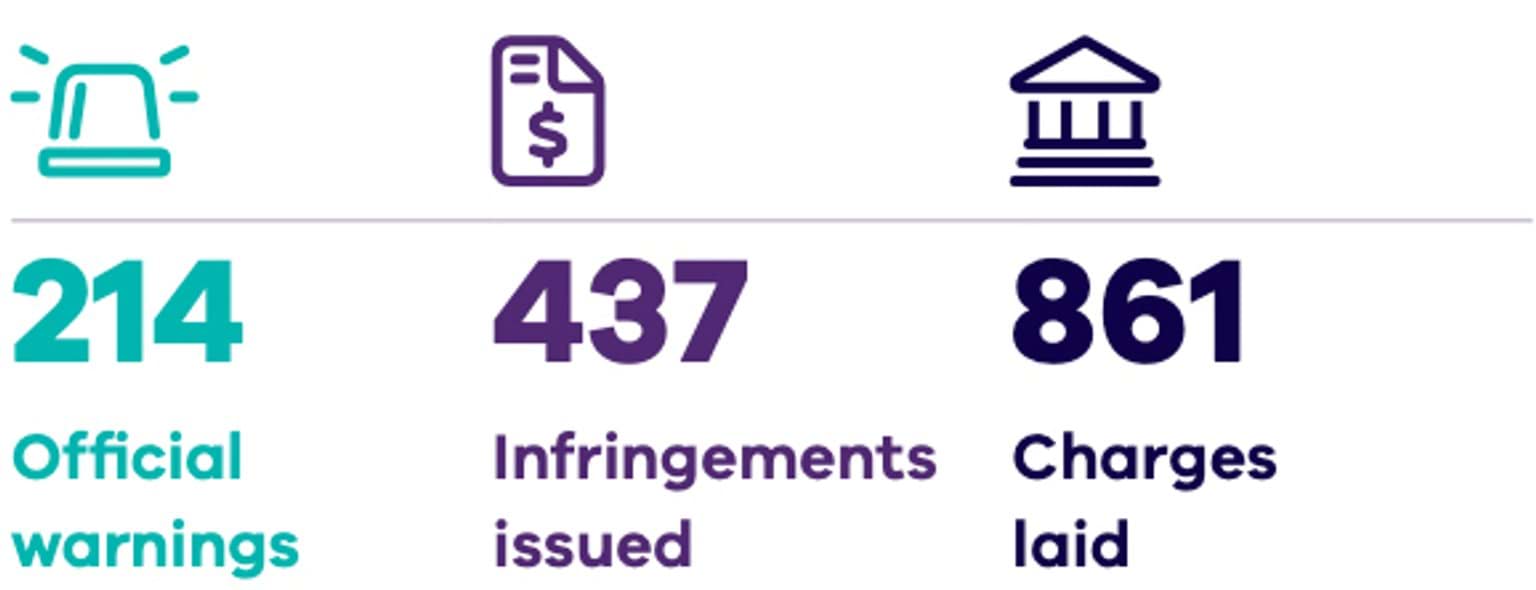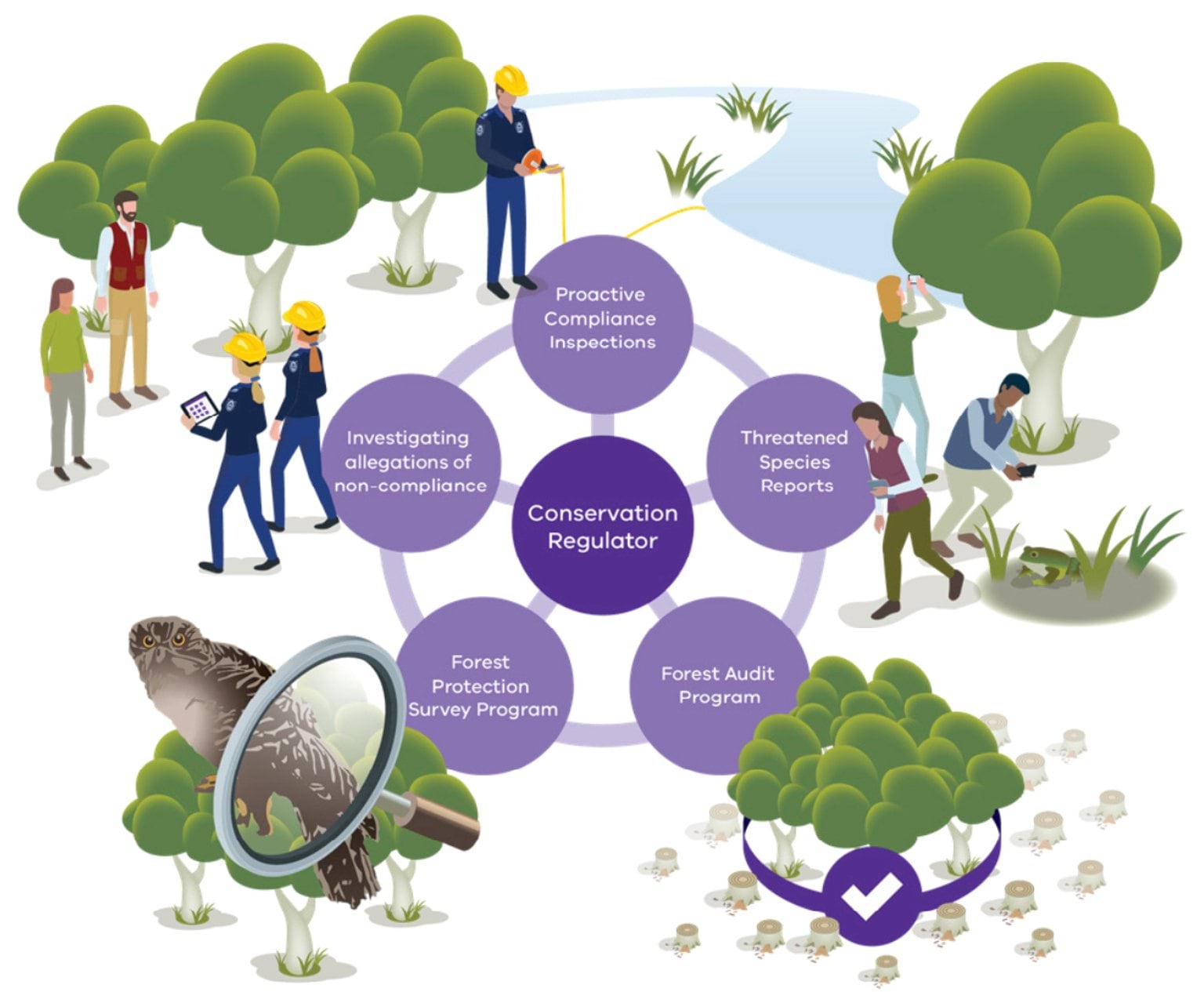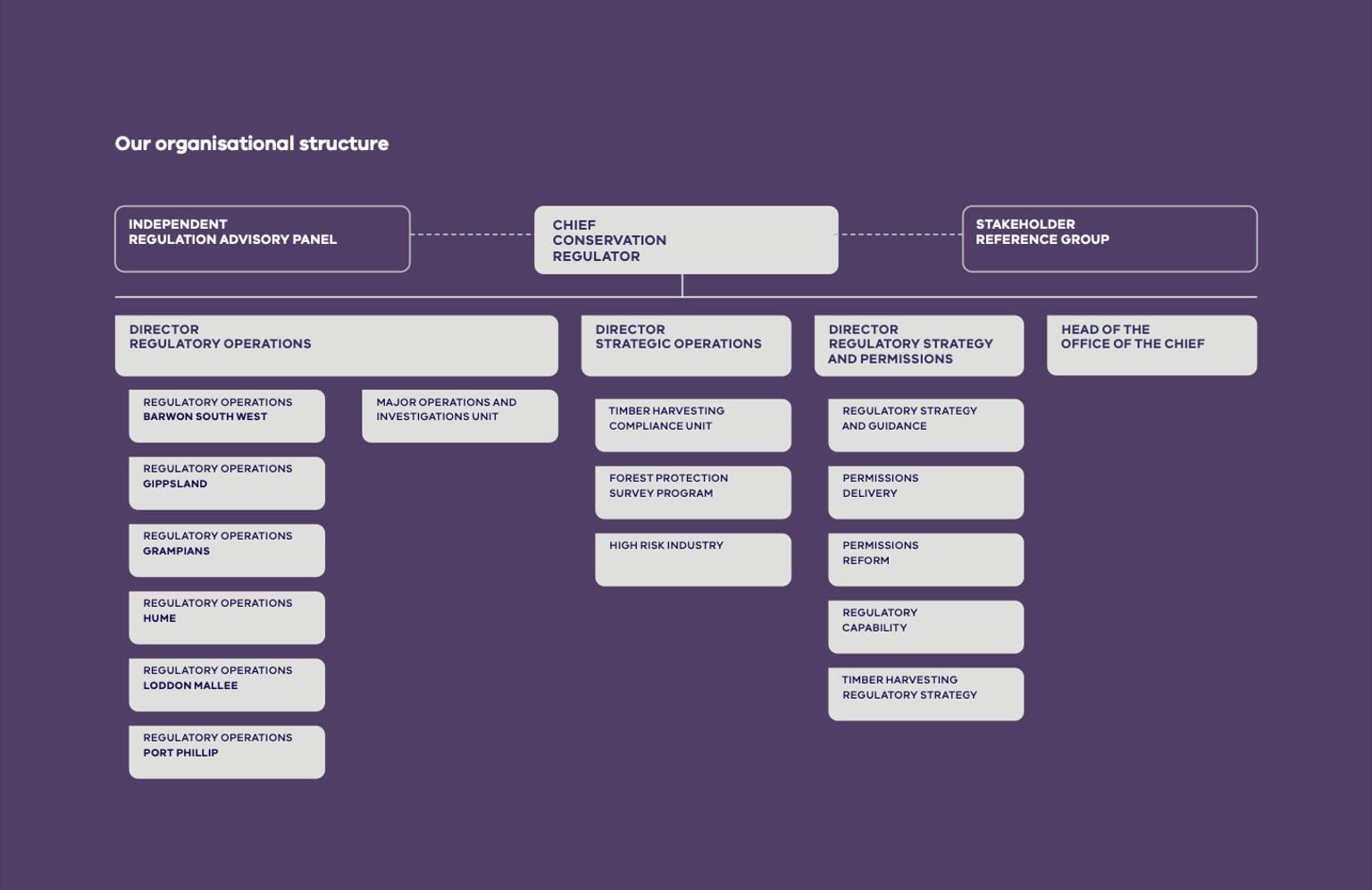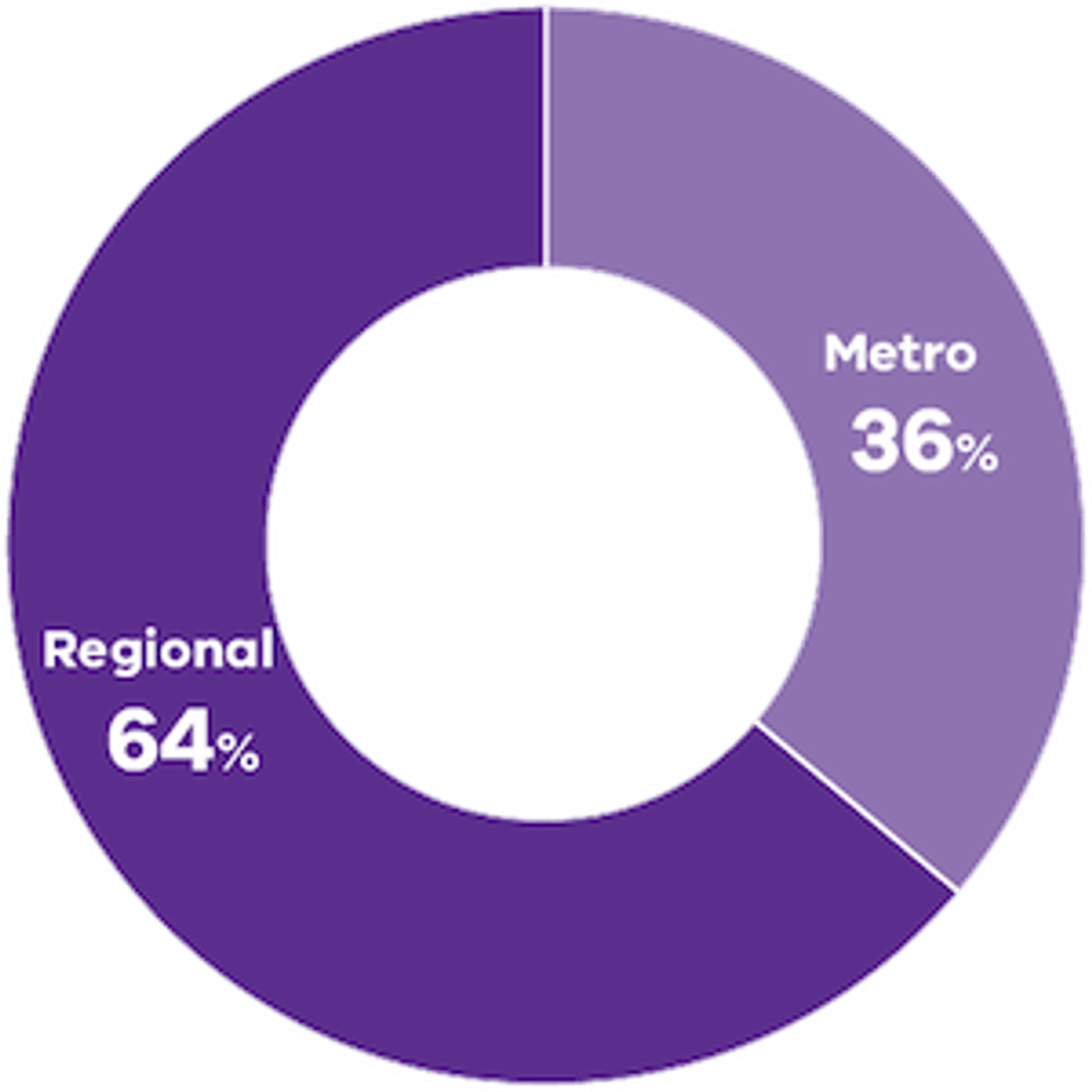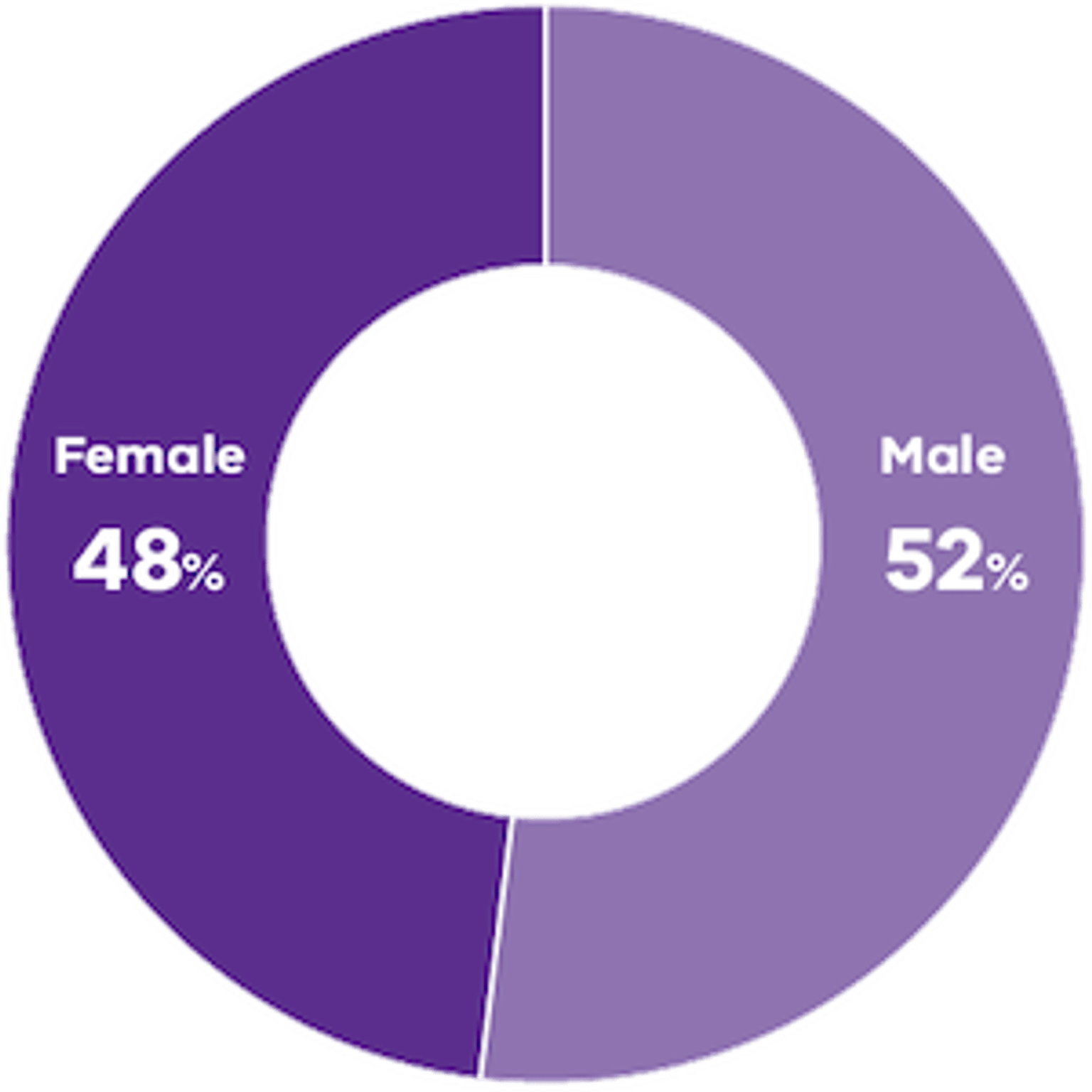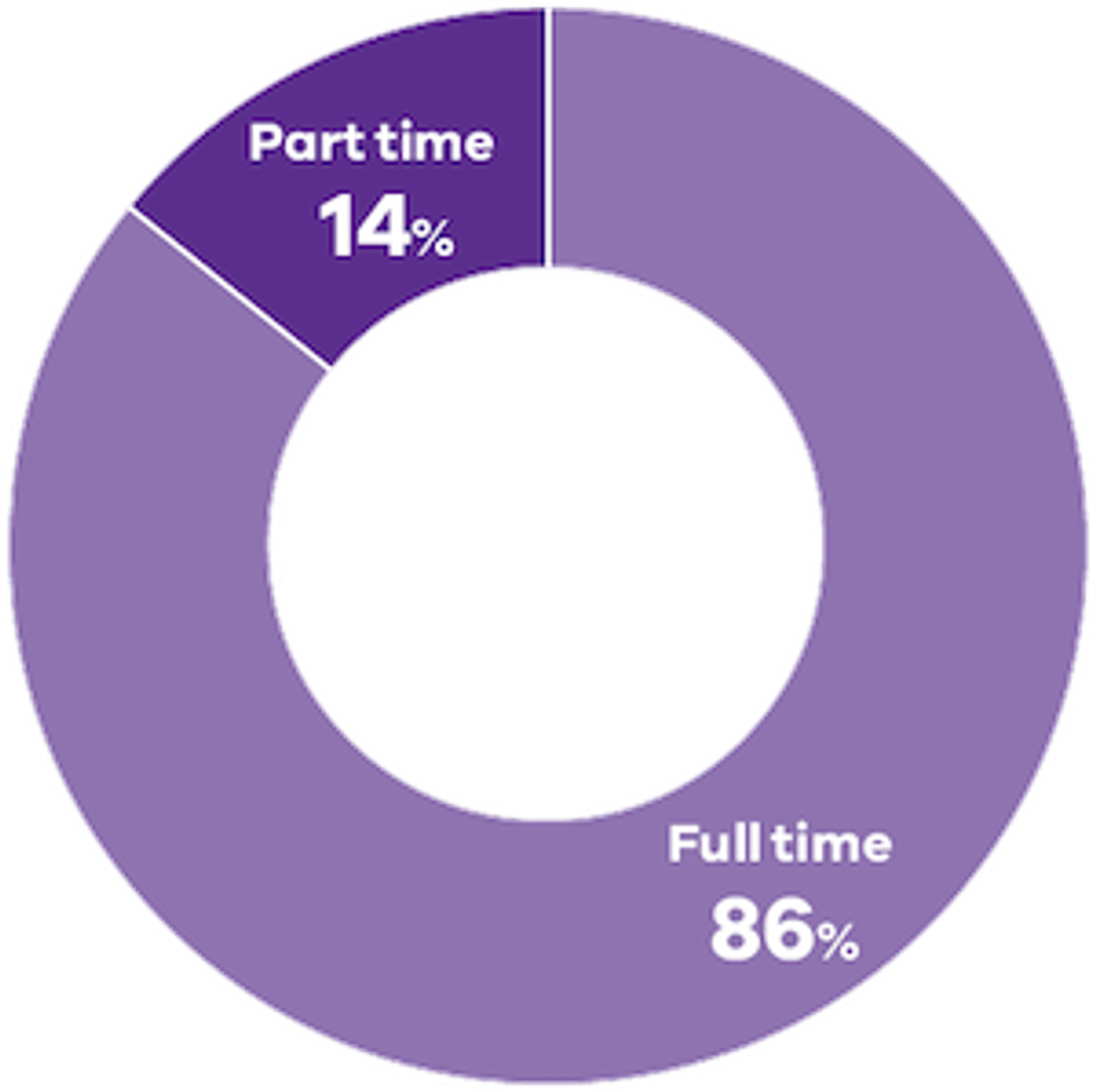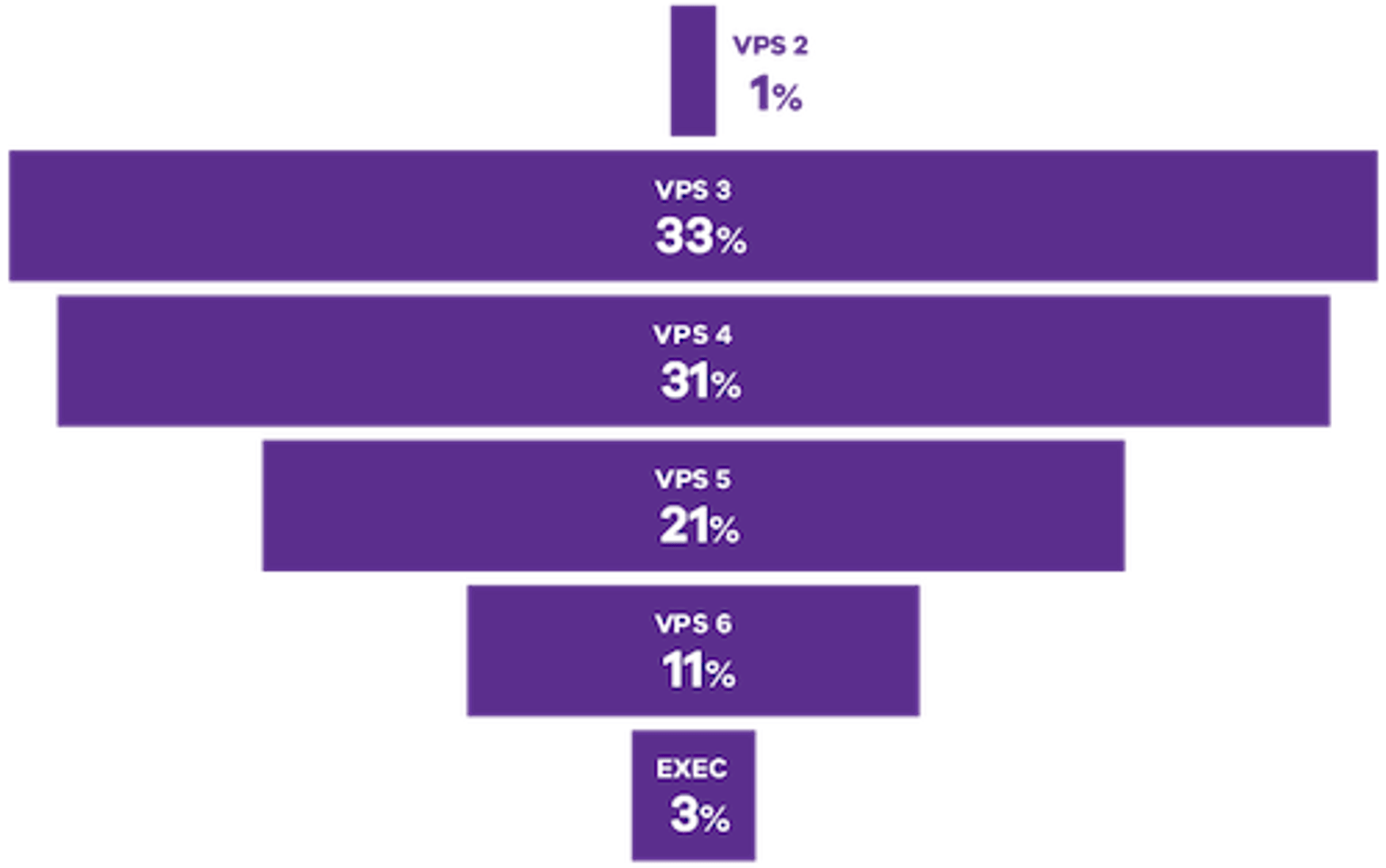- Date:
- 28 Sep 2022
The Conservation Regulator has published its third Year in Review, outlining the achievements and progress made from 1 July 2021 to 30 June 2022.
Our third year has been filled with progress across our key regulatory priorities while also being responsive to the challenges that the last 12 months brought about due to COVID-19 and increased public land use across the State.
We would like to thank our regulatory partners and stakeholders for their contributions in helping to establish and progress the priorities of the Conservation Regulator.
Chief's message
Kate Gavens, Chief Conservation Regulator
Welcome to the Conservation Regulator’s Year in Review for 2021-22. Our third year of operation was characterised by strong interest and use in the environment and public land in part driven by the impacts of the global pandemic and the desire of Victorians to connect with nature. It was great to see such an uptake of public land use and interest in wildlife over this time.
The past 12 months has been full of significant outcomes for the Conservation Regulator, including record penalties for several native vegetation and wildlife cases, and a marked reduction in the number of unattended campfires. We continued to improve our systems, processes and tools, introducing online applications for a range of licence and permit applications and creating new online resources making us more accessible to the community.
There continues to be significant interest in the way we regulate, particularly native timber harvesting and the protection of wildlife. These are challenging and important areas of our regulatory responsibility and our Authorised Officers have continued to apply a risk-based approach to regulatory activities. This applies every day and on every case.
After almost three years of operation, we have established a solid foundation and are now embedding our regulatory approach, focusing our efforts on where the greatest risks lie, to have the most impact on protecting our environment. We continue to educate Victorians about the law, provide compliance support and enforce the law when required.
More than any other, this year we have had greater opportunity to engage with the community, including in our day-to-day operations which saw a record number of proactive patrols on public land, or through online and in-person forums with forest users and those involved in surveying for threatened species.
Thank you to our stakeholders and partners who provide valuable feedback to help us continue to develop our approach as a regulator. We are continually looking to build more relationships with individuals and groups who have a shared interest in keeping our forests open, safe and healthy and protecting our wildlife.
I hope you enjoy reading our achievements in Year in Review and look forward to continuing this work in 2022-23.
About us
The Conservation Regulator oversees the regulation of timber harvesting, public land use, biodiversity and fire prevention. We are a specialist regulator, established within the Department of Environment, Land, Water and Planning (DELWP).
Now in our third year of operation, the Conservation Regulator continues to strive to improve our regulatory practice and operation. We continue to focus on opportunities for collaboration and strengthening our relationships with Victorian communities, Traditional Owners, co-regulators and other stakeholders.
Our mission
To be an effective, trusted, best practice regulator
Our vision
To create and maintain liveable, inclusive, sustainable communities and thriving natural environments
Our regulatory outcomes
We regulate to achieve three key outcomes:
- Equitable and safe access to public land and use of natural resources
- Protected natural and heritage values
- Sustainable communities – social, economic and environmental
Our regulatory approach is central to articulating how we will undertake our regulatory role, in order to achieve the key outcomes outlined above.
In 2021-22 we refined our priorities to direct our effort to where our intelligence says the greatest compliance and environmental risks lie. Visitation numbers to public land since the onset of the pandemic continued to remain high.
We also saw increases in the sales of off-road vehicles, higher demand for wildlife as pets, and change in energy demands leading to increased take of firewood, particularly while more people spent time at home during the pandemic.
Given these trends, we refocused our regulatory efforts on five updated regulatory priorities. Progress on our regulatory priorities outlines our progress against addressing each of these regulatory priorities.
Our compliance and enforcement approach
The Conservation Regulator focuses its effort on where there are the most significant risks in order to maximise the outcomes achieved. We do this by considering:
- the level of risk non-compliance poses to our regulatory outcomes
- our ability to reduce risk to our regulatory outcomes
- the most effective use of our regulatory resources.
If illegal activity is detected, we use a measured approach to determine our response. It is not practical or appropriate to take compliance and enforcement action in response to every alleged or suspected breach of the law. Depending on the risk of harm and the attitude or behaviour of the person or entity breaking the law we may:
- assist, help or educate the regulated entity
- apply penalties
- apply the full force of the law.
We monitor compliance with the law to prevent harm to the environment wherever possible. Through monitoring we identify non-compliance and maintain a credible threat of detecting those who are engaging in illegal activities.
We also undertake preventative work, such as raising awareness of regulatory requirements and how to comply with the law, and we respond to reports of crime as they arise.
Progress on our regulatory priorities
In 2021-22 we continued our commitment to regulating in a way that is risk-based and intelligence-led, whilst engaging with the community to improve compliance with the law.
Illegal campfires
The Conservation Regulator continued to prioritise the safety of communities and the protection of the environment from devastating impacts of bushfire by reducing risks from illegal and unsafe campfires.
In 2021-22, more Victorians accessed public land closer to home for recreational purposes including camping, and with this there was widespread use of campfires. Our Authorised Officers conducted over 800 patrols of public land in partnership with Forest Fire Management Victoria to detect illegal campfires, inform and educate people on the laws, and where necessary take enforcement action when non-compliance occurred.
Whilst the weather conditions caused by La Nina reduced the risk associated with unattended campfires, the potential harms to the environment and community from illegal campfires remains.
We also partnered with our co-regulators in undertaking an ongoing education program to raise awareness of campfire regulations and safety. This was delivered through media campaigns, customer centres and during patrols.
Officers detected 532 unattended or abandoned campfires from July 2021 – June 2022, compared to the 800-plus illegal campfires detected in the previous year, a reduction of 39% (over 340 campfires). Illegal campfires were most commonly reported across the Hume and Gippsland regions, comprising approximately 79% of the total illegal campfires reported.
There were 16 prosecution charges laid relating to illegal campfires, including 8 on days of Total Fire Ban.
Through sustained community engagement and education, the Conservation Regulator is seeing a decline in the number of illegal campfires across the state over time.
lllegal possession of wildlife
The Conservation Regulator has an important role in the protection of Victoria’s unique wildlife, which involves identifying, investigating and prosecuting those responsible for crimes against wildlife.
Each year, many animals are unlawfully taken from the wild, for the illegal trade market, or personal use. Animals that are illegally trafficked can suffer due to the often-cruel methods used to transport them across borders, whilst those that are illegally kept may not be appropriately cared for. Removal of wildlife from natural environments can result in permanent damage to habitat (e.g. through the removal of rocks or hollows), and place additional stress on fragile ecosystems, as well as adversely impacting wildlife populations.
In 2021-22 there were 284 prosecution charges laid relating to wildlife. This includes both illegal possession and unlawful harm of wildlife.
This year, we undertook a range of activities to tackle the illegal possession of wildlife:
- We continued to work with Crime Stoppers Victoria and the Department of Jobs, Precincts and Regions to raise awareness of wildlife crime. A coordinated media campaign, called Break the Chain, was launched in October 2021 to raise public awareness of wildlife trafficking and encouraging community members to report information on wildlife crime to Crime Stoppers. In the year leading up to the campaign, there was a 59% increase in wildlife crime-related tips made to Crime Stoppers Victoria. All these reports help us build a picture of wildlife crime and undertake investigations where there is sufficient evidence. We thank the public for these reports and urge you to continue coming forward.
- We continued to take focused action against illegal wildlife tracking in partnership with the Federal Department of Climate Change, Energy, the Environment and Water (DCCEEW) and Australian Border Force via Operation Birmingham (see breakout box). Prior to international borders closing due to COVID-19, there was a drop in the illegal movement of wildlife across borders, which is likely due in part to the work of previous operations targeted at wildlife trading. However, recently surveillance and intelligence activities have uncovered an increase in movement of wildlife across state and territory borders, and internationally as borders have reopened.
- We undertook an inspection blitz of wildlife licence holders to ensure they are keeping their wildlife within licence conditions. Fifty-nine randomly selected wildlife licence holders were inspected, and about 30% of licence holders were found to have been non-compliant against the conditions of their licence. The non-compliances identified were related to incomplete or non-compliant record keeping practices and were addressed through educational advice provided to licence holders. Findings from operations like these allow us to direct future regulatory efforts to areas that will provide the greatest benefit to our wildlife.
Koalas at Cape Bridgewater
In December 2021, following a Conservation Regulator investigation beginning in February 2020, the owner of a Cape Bridgewater property and two companies were charged with 253 animal cruelty offences for allegedly clearing the property.
The man and businesses are accused of clearing habitat which impacted more than 200 koalas, including at least 70 which were injured and killed or had to be euthanised. The landowner and a forest and earthmoving business each face 126 charges under the Prevention of Cruelty to Animals Act 1986 and the Wildlife Act 1975, including 18 aggravated cruelty charges for causing fatal injuries. A separate contracting business was also charged with one cruelty offence under the Prevention of Cruelty to Animals Act 1986 for disturbing the koalas. The cases are still before the Portland Magistrate Court. We will continue to update the community with developments.
Six months in jail for man who committed animal cruelty crimes
A Trafalgar man was jailed for six months over disturbing wildlife cruelty offences towards common wombats, eastern grey kangaroos, brush-tailed possums and Sambar Deer.
The man was convicted last year and re-sentenced in February following an appeal, which included jail- time, a $6,000 fine and a ban from owning or being in charge of a dog for four years.
The man admitted using Mastiff-cross dogs to hunt and kill common wombats, eastern grey kangaroos, brush-tailed possums and Sambar Deer over a 21-month period between 2018-20. He also admitted to illegally using a firearm on 12 occasions against Sambar Deer.
He pleaded guilty to 50 counts of cruelty and hunting offences under the Wildlife Act 1975 and Prevention of Cruelty to Animals Act 1986, including one count of aggravated cruelty for killing a protected Eastern Grey Kangaroo.
He also pleaded guilty to a further three charges for offences committed under the Forests Act 1958 and Land Conservation (Vehicle Control) Regulations 2013.
Table 1 Performance measures for regulating the protection of wildlife
|
Performance measure |
Total |
|
|
Number of Wildlife Permissions by type issued |
Authority to Control Wildlife permits |
2,148 |
|
Commercial Wildlife Licences |
268 |
|
|
Private Wildlife Licences (including Dingo licences) |
7,377 |
|
|
Wildlife Shelter Licences |
257 |
|
|
Wildlife foster carer licences |
246 |
|
|
Wildlife import/export permits |
1,568 |
|
|
Research permits |
358 |
|
|
# or % proportion of Wildlife Licence Holders that submitted their required annual return |
47% |
|
|
Number of licence, permit and property inspections conducted to determine compliance with conditions |
148 |
|
|
Number of times Infringement Notices issued and number of prosecutions commenced in response to non-compliance, in line with the Conservation Regulator Compliance and Enforcement Policy |
Infringements issued |
28 |
|
Prosecution cases heard in the courts |
18 |
|
|
Number of contacts received and assessed by our Customer Contact Centre concerning wildlife |
4,645 |
|
Permits and licencing
There are many difference licences and permits issued by the Conservation Regulator. These help to ensure that when people interact with our wildlife, they do it carefully, ethically, sustainably, and in a way that meets the requirements of the Wildlife Act 1975.
We have continued to improve the way we assess and issue permits and licences including digitising application forms for Authority to Control Wildlife, Import and Export permits, and private wildlife licences.
Each year the number of Authority to Control Wildlife permits we issue varies and can be heavily influenced by environmental conditions. In 2021-22, higher rainfall and increased posture growth led to more native animals impacting upon agricultural land. This is likely to have have been a factor that led to an increase in the number of applications for Authority to Control Wildlife permits.
Licence and permit holders are subject to permit conditions and must meet these obligations. We provide education about obligations at the point of application and during renewals. We work to monitor compliance with licence and permit conditions, and non-compliances are pursued as part of our licence compliance activities. We also field hundreds of enquiries each year that come via email, or through the Customer Contact Centre.
Permit and licence types
There are many different licences and permits issued by the Conservation Regulator. They help to ensure that when people do interact with our wildlife, they do it carefully, ethically and sustainably. Permissions that we are responsible for include:
|
Private wildlife licence |
Allows people to keep wildlife as pets. |
|
Commercial wildlife licence |
Allows for the commercial use of wildlife, including selling wildlife in pet shops, keeping wildlife in zoos, as well as taxidermy and other processing of wildlife products. |
|
Authority to control wildlife |
For landholders and land managers who have issues with wildlife causing damage to buildings, pastures, crops or other property, or which pose risks to human health and safety. An authority may include permission for lethal and non-lethal control methods. |
|
Forest produce licence |
Allows individuals and private companies to cut, dig and take away material from state forests for personal or commercial use. |
|
Research permit |
Required for all wildlife in any research capacity, for instance attaching radio collars to track wildlife, or taking genetic samples from wildlife. |
|
Wildlife shelter or foster carer licence |
Required for the care and rehabilitation of injured or orphaned wildlife. |
International wildlife trafficking, Operation Sheffield
Our biggest wildlife trafficking investigation, Operation Sheffield, was conducted in 2018-20 in partnership with DCCEEW and Australian Border Force.
The lessons from this operation have led to some major improvements in stopping the illegal trade of Australian reptiles and other native animals before they are trafficked overseas.
Members of the public can now provide information on suspected wildlife trafficking through Crime Stoppers Victoria’s new dedicated ‘Wildlife Crime’ portal, which sends tips to our Intelligence Unit. The lessons we learned are being implemented in our ongoing operations and we are continuing to develop a proactive information sharing relationship with DCCEEW.
Five people have now been convicted following Operation Sheffield, with two prosecuted by the Conservation Regulator. In November 2021, a Werribee wildlife keeper was convicted and sentenced to a 12-month Community Corrections Order after Conservation Regulator Authorised Officers found a collection of more than 200 reptiles in terrible condition.
Officers executed a search warrant on the man’s house in 2019 and discovered reptiles that were dead and severely injured due to inadequate enclosures, food and water, and lack of veterinary treatment. His records were also inaccurate, a breach of the conditions of his wildlife licence.
Most of the animals in his possession had been taken from the wild. He was found guilty of offences under the Wildlife Act 1975, Wildlife Regulations 2013 and Prevention of Cruelty to Animals Act 1986.
Illegal commercial timber harvesting
Conservation Regulator is responsible for regulating native timber harvesting in state forests.
This is a complex role and requires a multi-faceted regulatory approach that involves undertaking proactive inspections and investigations, gathering intelligence, audits and responding to reports of non-compliance. The approach undertaken and outcomes for 2021-22 are detailed further in the Regulating timber harvesting chapter.
Timber harvesting regulation changes
There are now clearer, more enforceable rules for timber harvesting under the Sustainable Forests (Timber) Act 2004, with the Forests Legislation Amendment (Compliance and Enforcement) Act 2021 now in effect.
The changes clarify liability for offences under the Sustainable Forests (Timber) Act 2004. Powers to put in place enforceable undertakings and injunctions have been refined, and the Regulator has new powers to compel the production of certain documents to monitor compliance and assist in the conduct of investigation. The statute of limitations for prosecutions under the Act is also extended, from two years to three.
For the first time, timber industry contractors can also be liable for offences under the Sustainable Forests (Timber) Act 2004, and in 2022 the Conservation Regulator engaged with contractors and industry associations to help them understand their legal obligations. Information days were held at Bairnsdale, Traralgon and Marysville, where details on the changes to the law were shared with workers and employers.
Our Authorised Officers will continue to ensure enforcement action taken is in line with the harm caused. The Conservation Regulator’s approach to compliance and enforcement is described in our Compliance and Enforcement Policy.
Illegal take of firewood
The illegal take of firewood for personal use or in commercial quantities leads to the destruction of habitat, and the Conservation Regulator took concerted efforts in 2021-22 to tackle this persistent illegal activity.
Reports of illegal firewood collection tripled in 2021-22 from 2020–21 levels. This increase is the result of multiple factors, including improved detection and reporting, increased demand for firewood as a result of the increased costs of heating homes, and depletion of firewood stocks due to major bushfires.
In Victoria, there are designated firewood collection areas which provide the Victorian community with a legal source to collect from during two firewood collection seasons per year.
Preventing the destruction of habitat is critically important at a time when wildlife populations and ecosystems are still recovering from bushfire, and while climate change is leading to extreme weather events and overall hotter and drier conditions.
In 2021-22 there were 257 illegal firewood prosecution charges laid. We continued to refine our approach to reducing the environmental harm caused by the illegal removal of firewood from Victoria’s public land. Operation River Gum was a crucial collaborative enforcement operation, with key partner agencies including Parks Victoria and Victoria Police (see breakout box for more information).
Through more than 800 proactive patrols on public land associated with Operation Guardian, we engaged directly with members of the public, including many who were collecting firewood, providing an important opportunity to share information and educate the community about the law.
An advertising campaign via radio, in newspapers and online including on Facebook and Gumtree commencing in the Autumn firewood collection season in 2022, was highly successful in informing the community about how to comply with the relevant firewood requirements.
Amendments to the Forest Act 1958 (which took effect 1 May 2022) make it easier to understand and apply the law when people illegally remove timber and other forest produce by creating consistency for these offences across the state. Infringement notices can now be issued and penalties for these illegal actions in State Forests have been increased to align with penalties for similar actions in National Parks.
Operation River Gum
Through Operation River Gum we are continuing to develop and trial new operational methods to target illegal firewood collection in areas of greatest risk to both the environment and cultural values.
The areas of focus are primarily along the Murray, Goulburn and Loddon River corridors, with an emphasis on commercial levels of illegal firewood removal.
Concealed cameras have resulted in identifying and prosecuting individuals operating commercial scale operations on areas of public land. The seizing of chainsaws, trailers, vehicles, a light truck and timber has assisted in the effort to disrupt and deter those individuals who choose to undertake this activity. The locations selected for camera installations have both high biodiversity and cultural heritage values, which reflect the Conservation Regulator’s continued focus on targeting its resources to where the greatest protection is needed.
Our compliance and enforcement activities wouldn’t be complete without community engagement. To date we have engaged with almost 100 local firewood sellers, asking for their help to reduce the frequency of illegal firewood removal from the public land estate.
This is a joint project between the Conservation Regulator, Parks Victoria, Traditional Owners and the DELWP’s Forest Fire Operations Division. Operation River Gum will form a basis for future firewood based compliance activities across the state to ensure our efforts and resources are aligned with targeting the activities that result in high levels of environmental harm.
Buying firewood ads
We rely on members of the public for information about non- compliance. In June, we advertised educational messaging on Gumtree and Facebook Marketplace targeting people looking to purchase firewood in Victoria over winter.
The purpose was to encourage buyers to try and understand if firewood for sale had been sourced legally, by asking the following questions of their supplier:
- Where does your wood come from?
- Can I get a receipt?
- Why is the wood so cheap?
If a buyer was unable to get answers to these questions, they were encouraged to report this information to us on 136 186.
We chose Gumtree and Facebook Marketplace because these digital platforms are popular places for firewood trade.
The ads coincided with a state-wide media and social media campaign, which reached more than 130,000 people.
Illegal vehicle use
An increase in off-road activities on public land has been driven by population growth, increasing numbers of visitors to public land associated with the pandemic, and the lower cost of recreational vehicles.
Illegal vehicle use on public land usually involves driving off-road on walking tracks, through the bush or areas closed to the public. It damages the environment and cultural sites, spreads soil- borne pathogens and poses a safety risk to those engaging in illegal behaviour. Environmental damage is also being witnessed as the result of the illegal construction of both mountain bike and trail bike trails.
In 2021-22 there were 21 prosecution charges laid relating to off-road vehicle use on public land. Key sites of offending included in Barwon South West and Gippsland, where off-road trail bike use was a key offence.
The Conservation Regulator has undertaken targeted operations at key sites across the state to identify offenders. We use several investigation methods, including patrols, encouraging community reports and the use of concealed surveillance cameras on public land.
The Conservation Regulator operates a Trail Bike Initiative which seeks to promote safe, legal and environmentally sustainable trail riding practices within the community of approximately 60,000 licenced trail bike riders with registered trail bikes. These riders are authorised to access over 30,000km of roads and formed vehicle tracks in State forests, with additional riding opportunities in State parks.
More than 30% of Victoria’s reported motorcycle crashes occur on these roads, and in addition, significant environmental damage can result if the motorcycles are illegally operated off the formed road network.
Safety and environmental protection concerns have grown during the past two years due to the significant increase in the number and frequency of people going trail bike riding. Federal Chamber of Automotive Industries data show that during the COVID-19 pandemic, sales of off-road motorcycles increased by 30.3% during 2020 and 54.9% during 2021 compared to 2019.
This increase has been driven by growing community interest in taking up informal outdoor recreation and has been enabled by greater disposable income for many because of travel and other leisure activities being curtailed. The long-term legacy is that there are going to be more riders and more trail bikes in Victoria's forests in the future.
Through the Trail Bike Initiative, the Conservation Regulator works with road safety partners (Victoria Police, Department of Health, Transport Accident Commission, Department of Justice and Community Safety and Department of Transport) and motorcycle associations to promote safe riding practices.
The Conservation Regulator now has more than 40 accredited staff who conduct trail bike mounted patrols across all State forests. Conversation Regulator trail bike officers attend trail bike events across the State to promote the awareness and use of Personal Locator Beacons (PLBs) as an aid to summon emergency medical support in the event of a serious crash.
Summary of enforcement action
Charges laid increased in November this year as some of our biggest operations reached the court system. This included cruelty charges laid over the deaths and injuries of koalas near Cape Bridgewater and habitat destruction charges for a public land clearing case near Mildura.
Figure 3 provides a month-by-month breakdown of the number of warnings and infringements issued and number of accused prosecuted.
Fines for clearing native vegetation
We have seen some record results in the Victorian courts this year, with two public land clearing cases brought by the Conservation Regulator receiving convictions and the highest penalties ever handed down for our cases.
Criminal convictions and significant fines were handed down on two of our large-scale clearing investigations.
Two men were convicted and fined $25,000 each, for the destruction of more than eight hectares of wildlife habitat near Mildura, and in the state’s southwest, a farmer was convicted and ordered to pay nearly $60,000 for destroying habitat in the Annya State Forest, near Heywood.
Both cases occurred on public land neighbouring the offenders’ properties, and in both cases the respective Magistrate said the offenders should have known better.
As the regulator of public land in Victoria, it’s our responsibility to investigate and prosecute cases of illegal native vegetation removal on Crown land
Our achievements
Our third year of operation has seen us capitalise on the work of previous years to embed our priorities, and focus on where the greatest harms may lie. We have increasingly focused our efforts on proactive activities, while still ensuring that reports of crime are promptly assessed, and where appropriate, investigated.
Operation Guardian
The Conservation Regulator has led a total of 1,952 proactive patrols across public land since April 2020 through Operation Guardian to protect natural resources and ensure compliance.
As COVID-19 restrictions eased and the weather changed, we expected to see Victorian’s taking up the opportunity to explore Victoria’s great outdoors.
The focus of Operation Guardian was to gather intelligence around the movement of people across public land and ensure education about and compliance with natural resource laws. The Conservation Regulator conducted patrols targeting operational priorities such as campfires, off-road vehicle use, firewood, and wildlife. A coordinated approach with partner agencies enabled patrol coverage of known hotspots as well as targeted operations to ensure organised events were conducted lawfully with the best environmental outcomes possible.
Over the 2021-22 period, 809 patrols were conducted in a variety of environments, to maintain public awareness of our presence as a deterrent of non-compliance, but also to target hotspots of illegal activity. We engaged with more than 71,330 people, through 5,990 patrol reports, supporting community education and engagement about the role of the Conservation Regulator and compliance with the law.
Over the course of the year, our Authorised Officers partnered with Forest, Fire and Operations Division staff and Parks Victoria Officers who all play roles in protecting and monitoring public land. Our Officers also maintained agility in their readiness and response commitments during fire and wildlife emergencies, festivals and hunting seasons.
The successes of Operation Guardian are being assessed, and all lessons learned will be adapted into future compliance patrol activities.
Key publications
We published a number of documents throughout the year which explain where we will focus our effort, along with guidance to community and industry about how to support compliance. These publications are critical in supporting our regulatory work, as a key responsibility we have is to inform stakeholders, and provide support and guidance, to prevent harm from occurring in the first place.
In 2021-22 we published:
Regulatory Priorities 2021-2022
The Regulatory Priorities 2021 – 2022 support the Conservation Regulator to be an effective, trusted, best practice regulator.
Regulating the protection of Wildlife
Humane treatment of wildlife and the protection of both species and individuals is in the public interest and central to protecting wildlife.
Reporting Detections of Southern Greater Gliders
Information to help the community report detections of Southern Greater Glider populations to the Conservation RegulatorISBN 978-1-76105-955-1
Upgrades to our systems and processes
We are continuously looking for ways to improve our systems, processes and tools, enabling us to adapt and respond quickly to challenges. In 2021-22 we introduced online applications and forms for the following:
- Submissions of Forest Reports, for allegations of non-compliant timber harvesting and detections of threatened species reports
- Authority to Control Wildlife applications
- Pre-application checklist for research permits to help applicants determine what permits and agreements they required
- Import and Export Permit applications and notification of outcomes for permits
- Wildlife Licence Annual returns
- Private Wildlife Licence applications.
Since introducing these upgrades, more than half of new regulatory permission applications are being submitted online and 84% of Annual Returns were submitted digitally. We are now observing reductions in processing times.
Continued focus on transparency
Being transparent about what activities we are undertaking, the decisions we make and the outcomes of our actions is really important as we continue to build the community’s trust in our work as the Regulator. In 2021-22, we continued our focus on increasing transparency.
We provide open access to data utilised by timber harvesting programs via the Forest Information Portal. This interactive website allows anyone to view forest-related data such as vegetation types, boundaries and recreation locations as well as information from our Forest Protection Survey Program, compliance reports, threatened species reports and Coupe Inspection Program. Outcomes of our Forest Audit Program are also published online.
We have continued to consult with community members and businesses using EngageVic, the Victorian Government’s online platform, to seek feedback on draft tools, strategies and guidance, including in the development of both the Statement of Regulatory Intent for Wildlife and the Guidance for reporting detections of Greater Gliders. After each consultation process, we publish engagement reports to tell you what we heard and how we have responded to your feedback.
Working together to achieve outcomes
We achieve our best work when we collaborate with you.
The Conservation Regulator has a broad role in regulation, and there are myriad opportunities to work with our partners and stakeholders to achieve the best outcomes for our environment and community.
Our relationships with our co-regulators are key. By working with agencies such as Parks Victoria, the Game Management Authority and Victoria Police, we can provide strong compliance outcomes through joint patrols, investigations, operations and educational activities.
We are reliant on members of the community to tell us about potential breaches of the law, provide information that assists our investigations, and to contribute to our work through public consultation which we undertake when developing our guidance and strategies.
We have sought input from our stakeholders via EngageVic consultation, through our Stakeholder Reference Group, and forums including our inaugural Recreational Users Forum in June 2022 which sought to identify opportunities for user groups and the Conservation Regulator to work better together to protect our environment.
We are always looking for new and innovative ways to engage with different communities and ensure all Victorians understand what you can and can’t do on public land and with native wildlife. In 2021, we partnered with the Migrant Information Centre to deliver four information sessions on hunting and wildlife to members of the Myanmar community who frequently enjoy using state forests, parks and public land for activities like camping and hunting.
Officers explained how to correctly construct and extinguish campfires, how to correctly dispose of rubbish on public land, the laws around vehicle use on public land and key rules relating to wildlife. Game Management Authority and Victoria Police members also presented at these sessions.
Engaging with recreational forest users
The Conservation Regulator is making it a priority to get out and engage with recreational forest users. Recreational users and peak bodies came together for the Conservation Regulator’s first forum for recreational users of state forests in Victoria. The forum provided opportunities for these groups to learn more about the Regulator’s role and for us as the Regulator to better understand how state forests are being used.
As leaders within their communities and networks, outdoor user groups are uniquely placed to educate the community, and we have shared interests in maintaining the balance of keeping forests open, healthy and safe.
Community engagement opportunities, like this forum, are great opportunities for us to meet with our stakeholders, and better understand their needs, and we are looking forward to continuing to engage with the community in 2022-23.
Regulating timber harvesting
The Conservation Regulator continued its focused effort on the regulation of timber harvesting in state forests, with an emphasis on proactive activities to prevent harm. Reactive compliance and enforcement efforts, particularly in response to reports of non-compliances and third-party information, also continues to be a significant focus.
A holistic approach to timber harvesting regulation
Figure 4 summarises how the Conservation Regulator works to ensure that the planning and conduct of timber harvesting operations complies with the law, and that important forest values are protected.
In 2021-22, we continued to be adaptive in our regulatory approach, using the best available information and intelligence to target our activities to those areas with potential for the greatest environmental harm.
Proactive coupe inspections
The proactive Coupe Inspection Program focuses on preventing environmental harm during timber harvesting. The coupes we inspect are selected based on the presence of important environmental values and high-risk activities. Information such as threatened species surveys, third-party reports, results from the Forest Audit Program and past observations by Conservation Regulator Authorised Officers are integral when prioritising coupes for inspection.
The Coupe Inspection Program includes assessments that are regionally distributed, examining a broad range of regulatory obligations and compliance across the ‘lifecycle’ of timber harvesting, from planning through to post-harvesting remediation.
In 2021-22, 53 coupes were proactively inspected, exceeding our financial year target of 30 coupes.
Reports of non‐compliance and threatened species detections
Members of the public can submit reports to the Conservation Regulator regarding allegations of non- compliant timber harvesting activities, the detection of threatened species or forest values found in or adjacent to planned timber harvesting locations.
Assessing each report is a priority for the Conservation Regulator and is undertaken by experienced Authorised Officers.
In 2021-22 we received 31 reports of alleged non- compliance and received 98 threatened species reports.
After reports of threatened species are made and while the necessary verification process is undertaken by relevant experts, Conservation Regulator ensures that interim protections (consistent with a positive verification) are established to protect important values from timber harvesting.
Across 2021-22, we processed and closed 63 threatened species reports. As of 30 June 2022, 40 threatened species reports were open while they are subject to verification or the implementation of changes to forest zoning.
During the year, three letters of advice, one formal written warning and three directions for remediation regarding timber harvesting activities were issued in relation to the conduct of VicForests and their contractors. In addition, one notice was issued to VicForests to suspend timber harvesting operations following failure to comply with a direction notice.
In response to feedback from stakeholders, we have also made a number of improvements to ensure transparent and clear information about our timber harvesting regulation activities including:
- A new online reporting tool for Forest Reports
- Publishing guidance on our website about what information, beyond the minimum requirements, can assist in progressing an assessment and investigation of a case.
- Providing clearer, more detailed case outcome information to those who submit a Forest Report, including detailed rationale and reasoning to better explain case outcome.
- Publishing improved information to our website about how the Conservation Regulator assesses a Forest Report, and the different factors that are considered in determining if a matter proceeds to the investigative phase.
- Establishing a Dispute Resolution process, which clearly outlines further avenues of enquiry should any stakeholder be dissatisfied with an outcome or wish to seek further information.
Forest Protection Survey Program
The Forest Protection Survey Program (FPSP) aims to detect threatened animals, plants and their habitats, as well as other high conservation values in State forest areas that are scheduled to be harvested. The FPSP is a highly adaptive program focused on State forests in the east of the state, and is constantly adapting and responding to the frequent and substantial changes in VicForests harvesting plans.
Detection of forest values results in their better protection from the impacts of timber harvesting, and in some cases can result in coupes not being harvested at all due to the large number of values that are detected.
In 2021-22, the program successfully achieved its annual target of surveying 80% of coupes planned for harvest, with 669 surveys conducted in 309 coupes planned for harvest in 2021-22, and in other coupes planned for harvest in future years.
Opportunities to engage the community in this program occurred through a series of online webinars delivered in late 2021, and via two open field days in April 2022 in the Tallarook and Yarra State Forests. The FPSP established three grants with Traditional Owner Corporations that resulted in direct participation by Traditional Owners in field surveys with FPSP contractors, and delivery of various cultural awareness training days, providing direct support for self-determination outcomes.
Making information publicly accessible is a key priority, and information on survey schedules and survey results is available via the Forest Information Portal, which is a publicly accessible interactive online mapping tool. In 2021-22, further information was made publicly available on the site including compliance reports, threatened species reports, and information on the Conservation Regulator’s Coupe Inspection Program, along with updates to timber harvesting history data.
Forest Audit Program
The Forest Audit Program (FAP) is undertaken by an independent auditor, and assesses the compliance of VicForests’ timber harvesting operations with the requirements outlined in the Code of Practice for Timber Production 2014 and the Management Standards and Procedures for Timber Harvesting Operations in Victoria’s State Forests 2014.
For the third year in a row, an independent environmental audit was undertaken to measure compliance of commercial timber harvesting operations, by auditing a representative sample of coupes harvesting in the 2021-22 financial year to assess a range of target themes.
The 2021-22 audit focused on:
- Protection of soil, water and biodiversity values
- Execution of in-coupe road design and construction
- Implementation of forest couple planning
- Compliance with measures under the precautionary principle. This includes a focus on the management of flora and fauna values in 2019-20 fire footprint within the East Gippsland FMA.
The outcomes of the 2021-22 FAP will be published during the 2022-23 financial year. Previous FAP outcomes are available on the Conservation Regulator website and demonstrate year-on-year improvements in VicForests’ compliance outcomes. This continued incremental improvement in compliance outcomes is, we believe, directly attributable to the Conservation Regulator’s more impactful regulatory engagement approach with VicForests and its contractors, contributing to the improved environmental performance of commercial timber harvesting and greater prevention of environmental harm.
Independent Review into Timber Harvesting Regulation
In 2018, at the request of the Minister for Energy, Environment and Climate Change (now Minister for Environment and Climate Action), an Independent Review into Timber Harvesting Regulation was undertaken. DELWP accepted all recommendations from the review in full and made further commitments to improve the way in which timber harvesting is regulated.
All commitments that the Conservation Regulator is responsible for delivering have been completed, and these are summarised in Appendix A.
Statement of Regulatory Intent for Timber Harvesting Regulation
In 2019, the Conservation Regulator released its Statement of Regulatory Intent for Timber Harvesting Regulation and committed to publicly reporting on an annual basis on the performance measures it contained. Table 2 below provides an update on each of the measures contained in the statement.
Table 2 Performance measure results for Timber Harvesting Compliance
|
Performance measure |
Target |
Result |
Comment |
|
Per cent of coupes planned for timber harvesting that have assessments under the FPSP for the potential presence of target flora and fauna, including threatened species and other values such as prescribed vegetation communities and trees. |
100% |
100% |
Target met |
|
Per cent of coupes planned for harvest that are surveyed |
80% |
81% |
Target met |
|
Per cent of coupes identified to contain rainforest as part of the FPSP that are spot checked |
20% |
N/A |
Checks of rainforest are now embedded within the Proactive Coupe Inspection Program, and it is an important value that is considered when selecting coupes for assessment |
|
Acknowledge receipt of reports of non-compliance |
<2 workdays |
1.6 work days |
Target met |
|
Commence the verification of threatened species reports |
<5 workdays |
0.81 work days |
Target met |
|
Number of coupes harvested in previous year that were audited as part of the FAP |
30 |
24 |
32 coupes were planned to be audited for the year, however, were delayed |
|
Number of coupes planned for timber harvesting, or where timber harvesting is underway, that are subject to compliance inspections |
30 |
53 |
Target met |
|
Average time taken to investigate alleged or suspected non-compliance |
<12 |
7.5 months |
Target met |
Table 3 Activity measures for timber harvesting related reports
|
Activity measure |
Result |
|
Number of threatened species reports received |
98 |
|
Number of threatened species reports that underwent verification |
32 |
|
Number of reports of alleged or suspected non-compliance received |
31 |
|
Number of reports of alleged or suspected non-compliance investigated |
5 |
Our people and governance
The Conservation Regulator has over 130 staff spread across the six DELWP regions of the state. Our staff perform both operational and strategic roles, working together to provide vital services to our community.
The Conservation Regulator is led by the Chief Conservation Regulator and is comprised of four business units
Regulatory Strategy and Permissions Branch
Delivering regulatory policy, strategy, operational procedures, capability development, permissions reform, and statewide wildlife permissions delivery.
Regulatory Operations Branch
Planning and delivering statewide operational programs, including support for and monitoring of compliance and enforcement of the law.
Strategic Operations Branch
Responsible for regulating timber harvesting compliance and proactive monitoring and surveying of coupes.
Office of the Chief
Delivers strategic coordination, media, engagement, communications and business management functions.
Continuing support for our community in the response to COVID-19
In 2020–21, all parts of the Victorian Government had to modify their activities to manage the extraordinary challenges of COVID-19.
The Conservation Regulator adapted too, and our expertise in operations, investigations and surveillance were drawn upon by the government.
As the response to COVID-19 continued into 2021-22, our participation in a multi-agency high risk industries operation continued. We aided in the promotion and enforcement of compliance with Victoria’s COVID-19 requirements for businesses and industries across our state.
The program included monitoring industry compliance against the Chief Health Officer’s COVID-19 directions and providing information and intelligence back to support future compliance and enforcement operations.
Whilst this program is now complete as of 30 June 2022, this contribution allowed the Conservation Regulator to play our part and support our communities during the COVID-19 pandemic.
Our people
*Non-binary information not available at time of publication
Advisory groups
Independent Regulation Advisory Panel
The Conservation Regulator’s Independent Regulation Advisory Panel (IRAP) provides the Chief Conservation Regulator with independent expert advice on best practice approaches to regulating.
The panel is comprised of three members who are experts in the field of environmental regulation.
In 2021-22, IRAP met four times and have:
- Provided advice on best practice regulation
- Provided advice on the Conservation Regulator’s settings for regulatory policy and governance, and operational oversight
- Reviewed matters referred to them by the Chief Conservation Regulator.
Stakeholder Reference Group
The Conservation Regulator’s Stakeholder Reference Group (SRG) provides advice and support to the Conservation Regulator in being an effective, trusted, best practice regulator for the Victorian community and environment.
During 2021-22, the SRG met as a group four times, and each member engaged with the Regulator on matters of interest throughout the year.
The SRG includes representatives from environmental non-government organisations, industry, local government and community organisations, and provides advice on:
- Supporting a robust understanding of the reasons that lead to breaches of regulations and how the Regulator can address them
- Supporting the design and delivery of an effective mix of awareness raising as well as regulatory compliance and enforcement interventions in accordance with current legislation
- Providing feedback on our communication and engagement approach, and opportunities for partnerships and collaboration
- Prioritising effort across a diverse range of regulatory obligations
- Providing feedback on the effectiveness of the regulator and opportunities for improvement
Budget and reporting
The Conservation Regulator’s budget covers its operational and strategic activities. We also report against key performance indicators which relate to our core regulatory accountabilities.
Budget details
Detailed financial reporting is included in the DELWP Annual Report 2021-22.
In summary, the Conservation Regulator had an annual budget of $24.255m for 2021-22 of which:
- $7.96m in operational expenses
- $16.29m in staffing costs
- $0.16 expended on capital expenses for patrol vehicle enhancements, trailer purchase and field monitoring equipment for patrolling.
The Conservation Regulator High Risk Industries received a second milestone payment in 2021-22 of $3.6m of which:
- $3.0m was for staffing and training
- $0.62m was for operational expenses.
Performance reporting
The Conservation Regulator reports against four mandatory performance measures from Budget Paper 3. The outcomes of each are summarised in Table 4.
Table 4 Budget Paper 3 measures
|
Budget paper 3 measure |
Target |
|
Investigations of alleged non-compliance with the Code of Practice for Timber Production, undertaken in accordance with the Environment Compliance Policy and associated procedure |
100% |
|
Wildlife Licence renewals processed by target dates |
96% |
|
Pre-harvest surveys of areas planned for timber harvesting completed |
80% |
|
Strategic compliance operations implemented by the Conservation Regulator |
6 |
Appendix A
The table below summarises the progress made against commitments for which the Conservation Regulator is responsible for delivering in DELWP’s Response to the Independent Review into Timber Harvesting Regulation. This does not include commitments and/or recommendations which are the responsibility of other parts of DELWP.
Action and status
|
Action |
Status |
Office of the Conservation Regulator |
|
|
Commence establishment of the Office of the Conservation Regulator |
Complete |
|
Commence recruitment of the Chief Conservation Regulator |
Complete |
|
Chief Conservation Regulator appointed by 30 May 2019 |
Complete |
|
Office of the Conservation Regulator formally commences by 30 June 2019 |
Complete |
Regulatory framework, policies and guidelines |
|
|
Publish Regulatory Framework document |
Complete |
|
Develop guidance material for Authorised Officers on use and application of available tools across all relevant Acts |
Complete |
|
Publish Compliance and Enforcement Policy |
Complete |
|
Finalise updated Prosecutions Policy |
Complete |
|
Publish state and regional Compliance Plans |
Complete |
Statement of Regulatory Intent |
|
|
Draft Statement of Regulatory Intent for Timber Harvesting for public consultation |
Complete |
|
Publish final Statement of Regulatory Intent for timber harvesting |
Complete |
|
Draft Statement of Regulatory Intent for other areas of environmental regulation that DELWP has direct responsibility for |
Complete |
|
Publish Statement of Regulatory Intent for other areas of regulation |
Complete |
|
Publicly report on performance against Statements of Intent |
Complete |
Communications and engagement |
|
|
Publish Communications and Engagement Strategy |
Complete |
|
Undertake a survey of native timber harvesting stakeholder perceptions and expectations (including run focus groups) |
Complete |
Independent oversight |
|
|
Establish Regulation Sub-committee of the DELWP Senior Executive Team |
Complete |
|
Establish an Independent Regulatory Assurance Panel |
Complete |
|
Establish a Stakeholder Reference Group |
Complete |
Capability development |
|
|
Complete Regulatory Capability Assessment |
Complete |
|
Finalise Capability Development Plan |
Complete |
|
Community of Regulatory Practice established |
Complete |
Shared data system |
|
|
System of shared data system for Victorian Government agencies, environmental non-government organisations and VicForests created |
Complete |
